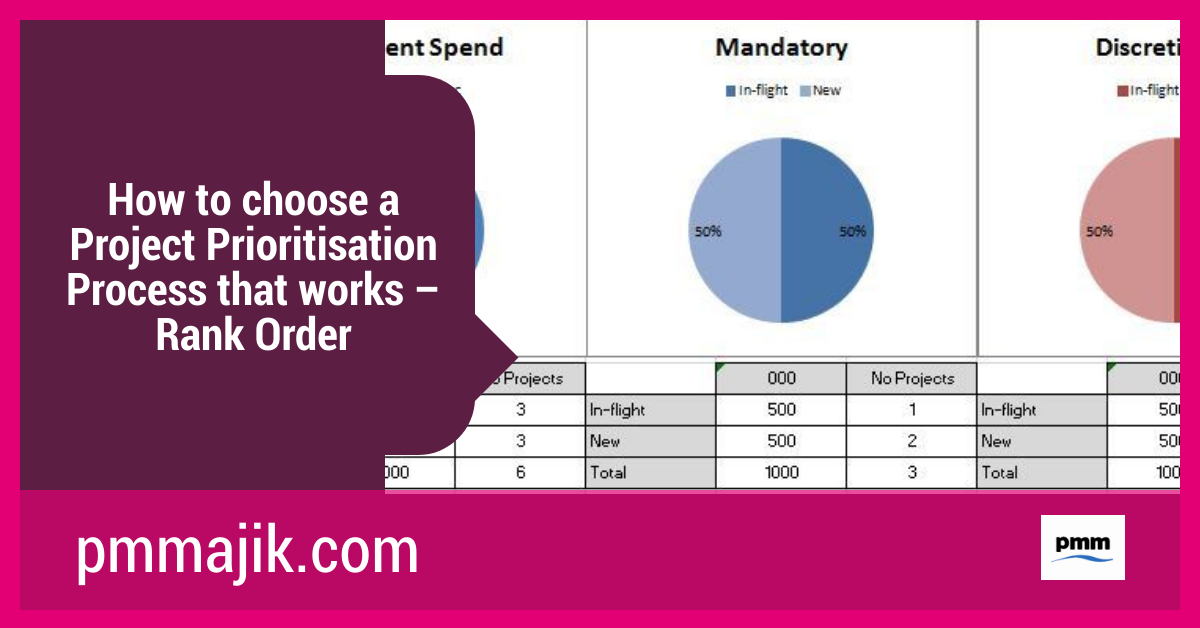The standard project management office (PMO) paradigm is having too many projects and not enough resources. You need to choose a project prioritisation process, and rank order is the first option we’re going to look at.
You need to have a way to determine which project or projects get the most resources allocated to them. This will ensure that your office and projects have the best chance of achieving their KPIs and the business should be able to meet its goals.
We’ve already looked at the details of why you need a prioritisation process and what you need to consider when choosing a way to prioritise projects. Here, we’re going to look at the first of three methods to direct your priorities.
We’ll be going through:
- How to conduct a rank order prioritisation
- Different ways you can conduct your rankings
- The advantages and disadvantages of rank order prioritisation
To help you assess whether this is the right method for your PMO to adopt.
What is rank order prioritisation for a PMO?
Assigning priority using rank order is a simple and generally effective process. It’s as simple as deciding a scale and putting each project on that scale.
Common scales you can use to rank your projects include:
- Low, medium, and high
- Numbers 1 to 10
- Letters A to Z
To determine where on the scale your projects will sit, you need to decide one or two factors that will for the assessment criteria. Which factors you choose will depend on your KPIs and the goals of the business.
You may choose to rank your project priority based on the ROI, the impact on customer outcomes, or how much it will contribute to a change agenda, for example. Which couple of factors you choose is going to be specific to your PMO.
Once you have your projects ranked, you give the top-ranked one all the resources it needs, the next one on the list gets all or most of what it needs, and you keep allocating resources until they’re all used up, and every other project gets put on hold until your next review.
How do I organise introducing rank order to my PMO prioritisation process?
If you choose to use rank order as your way to prioritise projects, you need to next decide who will be doing the rankings. There are three options you can choose:
- One member of the PMO team – having one person conduct the ranking will provide clear internal logic and consistency, but it is only a single opinion
- The whole of the PMO team – having everyone in your PMO assign rankings and do an average provides a broader view of projects in the portfolio but can be a time-consuming process
- All stakeholders and sponsors – anyone who is involved in projects is asked to rank their projects giving a full perspective including from SMEs, but you may experience some pushback and need to for rankings.
With each option having its benefits and drawbacks, you’ll need to choose who works on your prioritisation based on your PMO and wider business needs and constraints.
What are the advantages and disadvantages of prioritising with rank order?
Pros of using rank order project prioritisation
- There are no complicated maths to complete or spreadsheets to design
- It’s a simple process that will be easy for those involved to be trained in
- The outcomes are easy to comprehend and refer back to – there’s no matrix to look at
- Priority is based on only one or two outcomes, so it’s easy to measure the success
Cons of using rank order project prioritisation
- Everyone who will work on the ranking needs to have the same understanding of the KPI or business strategy being targeted
- It’s not ideal for large, complicated projects that may have a range of smaller tasks involved
- When you start to have more projects in your PMO, it can become more difficult to manage
The take-home
Choosing rank order as your project prioritisation process is a solid option for smaller PMOs. You won’t need to bring in calculations and software, and reassessment over time should be easy with only one or two factors to consider.
If your PMO is in a start-up or a high growth sector, rank order may not be future proof so consider using one of the other two methods we’ll be covering in coming posts.






